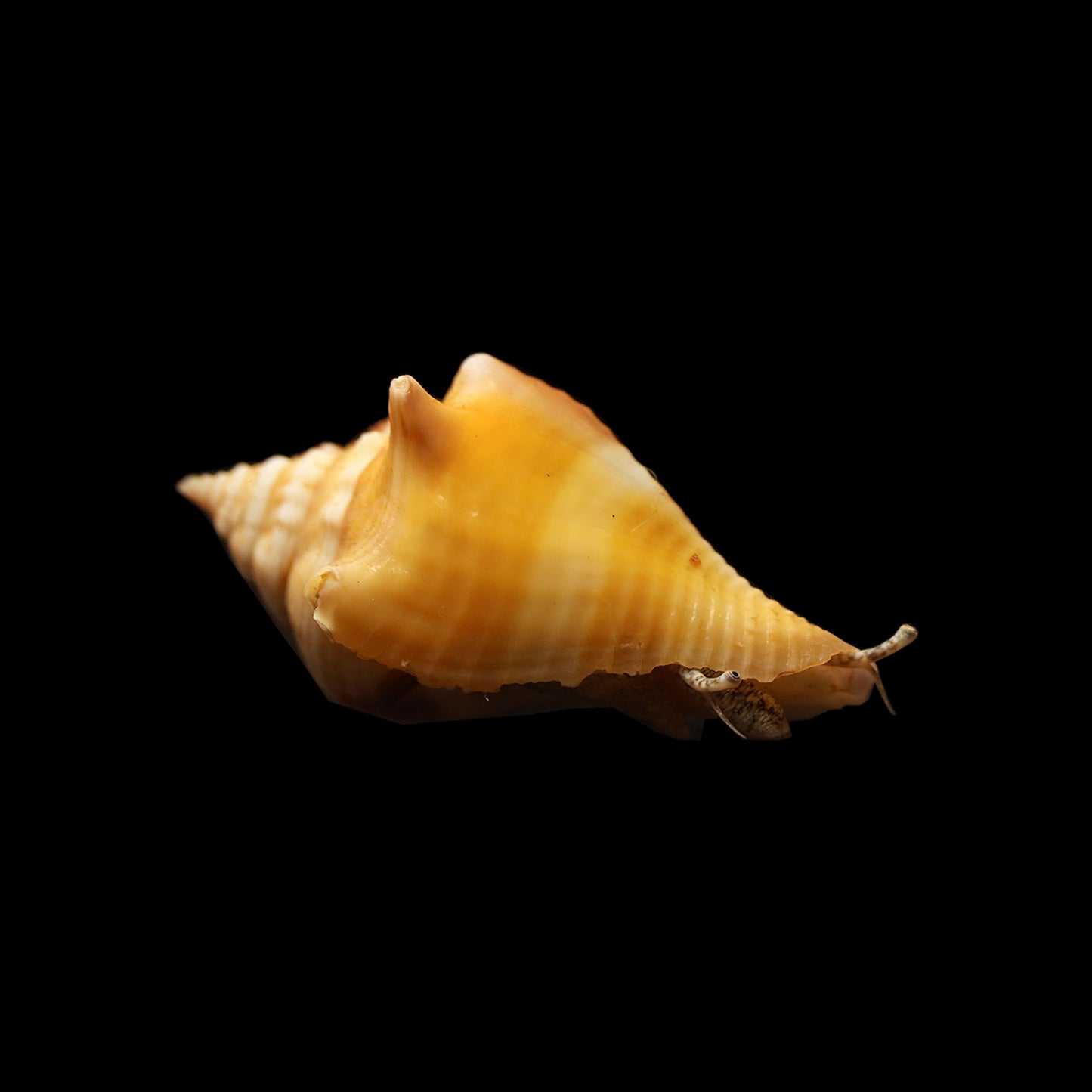AQUARIUM ARTS
Fighting Conch (Strombus alatus)
Fighting Conch (Strombus alatus)
Couldn't load pickup availability
Description: The Fighting Conch, scientifically known as Strombus alatus, is a robust and hardworking member of the cleanup crew in marine aquariums. Despite its intimidating name, this conch is peaceful and plays a vital role in maintaining a clean and healthy tank environment. Known for its distinctively shaped shell and active behavior, the Fighting Conch is a great addition to any saltwater aquarium, providing both aesthetic appeal and functional benefits.
Diet: Fighting Conchs are primarily herbivores, grazing on algae, diatoms, and detritus found on the substrate. In captivity, they can be supplemented with algae wafers, high-quality marine pellets, and occasional fresh vegetables such as blanched spinach or seaweed. Their diet helps control algae growth and keeps the substrate clean.
Benefits as Cleanup Crew:
-
Algae Control: Fighting Conchs are excellent algae eaters, helping to control various types of algae, including diatoms and nuisance algae.
-
Detritus Removal: They consume detritus and uneaten food, reducing waste accumulation and improving water quality.
-
Substrate Aeration: Their constant movement and digging in the substrate help to aerate the sand, preventing compacting and promoting a healthy tank environment.
-
Aesthetic Appeal: Their unique shell and active foraging behavior add visual interest and dynamic activity to the aquarium.
Care Considerations:
-
Tank Size: A minimum tank size of 20 gallons is recommended to provide enough space for their foraging activities.
-
Substrate: Provide a sandy substrate that allows them to burrow and search for food. Fine sand is ideal as it mimics their natural habitat.
-
Water Quality: Maintain stable water parameters, including temperature, salinity, and cleanliness. Regular water changes and monitoring are essential to support their health and behavior.
-
Compatibility: Fighting Conchs are peaceful and can coexist with a wide variety of tank mates, including fish, corals, and other invertebrates. Avoid housing them with aggressive species that may harm or stress them.
Adjust the quantity based on the size of your tank and the desired level of substrate maintenance and algae control.
Conclusion: The Fighting Conch is a valuable and beneficial addition to marine aquariums, known for its algae-eating and substrate-aerating habits. Despite its name, this conch is peaceful and effective in maintaining a clean and healthy tank environment. Enhance the health and beauty of your tank with Strombus alatus, the diligent Fighting Conch.
Share


